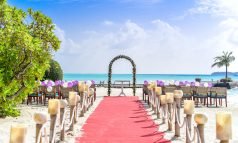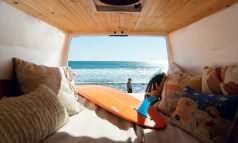
Designing a Wildlife Sanctuary with Innovative Greenhouse Glass Construction
Creating a wildlife sanctuary is a powerful way to protect endangered species and foster biodiversity. When you design a wildlife sanctuary, you not only create a safe haven for animals and plants but also establish a space that educates the public and promotes conservation. One of the most transformative methods in sanctuary design today involves integrating greenhouse glass construction. This technique enhances environmental control, sustainability, and the overall experience for both wildlife and visitors.
In this article, we’ll explore how to design a wildlife sanctuary using modern greenhouse glass construction principles, blending nature with technology to build thriving ecosystems.
Why Design a Wildlife Sanctuary?
The primary goal when you design a wildlife sanctuary is to create a controlled environment where animals and plants can flourish naturally. Wildlife sanctuaries serve multiple purposes: conservation, research, education, and recreation. Proper sanctuary design ensures habitats mimic natural settings while protecting species from urban development, climate change, and poaching.
Many sanctuaries face challenges like fluctuating temperatures, inconsistent humidity, and limited sunlight—factors that affect animal health and plant growth. Here’s where greenhouse glass construction comes into play.
The Role of Greenhouse Glass Construction in Sanctuary Design
Traditional sanctuary enclosures often rely on metal cages or open-air pens, which can expose animals to harsh weather or predators. In contrast, greenhouse glass construction offers a versatile solution that controls internal climate conditions without sacrificing natural light.
Greenhouse glass panels are highly durable, transparent, and allow optimal sunlight penetration. These features create an ideal environment for both flora and fauna. For example, tropical plants can thrive in temperature-controlled glasshouses, and reptiles benefit from sunlight exposure without escaping their enclosure.
By incorporating greenhouse glass construction, sanctuary designers can:
- Maintain stable temperature and humidity levels
- Maximize natural light exposure for plants and animals
- Reduce the use of artificial heating and lighting, saving energy
- Protect species from predators and extreme weather
- Provide visitors with clear views of wildlife in naturalistic habitats
Key Considerations When Designing a Wildlife Sanctuary with Greenhouse Glass
1. Habitat Simulation and Environmental Control
When you design a wildlife sanctuary, replicating natural habitats is crucial. Different species require distinct environments—wetlands, forests, deserts, or grasslands. Using greenhouse glass construction, you can create zones with controlled temperature, humidity, and light levels specific to each habitat type.
For instance, a tropical bird exhibit can be enclosed within a glasshouse that maintains warm temperatures and high humidity. Meanwhile, desert animals might inhabit glass enclosures with controlled ventilation to mimic arid conditions.
2. Structural Integrity and Safety
While glass provides excellent visibility and light transmission, sanctuary designers must ensure that structures are strong and safe. Modern greenhouse glass is often tempered or laminated, providing resistance to impacts and extreme weather. Frames made from aluminum or steel support the glass panels securely.
Sanctuaries housing large or strong animals must incorporate reinforced glass and sturdy framework to prevent damage or escape. Additionally, ventilation systems should allow fresh air circulation without compromising enclosure security.
3. Sustainability and Energy Efficiency
Sustainability is at the heart of contemporary sanctuary design. Using greenhouse glass construction, sanctuaries reduce reliance on electricity by harnessing natural sunlight for heating and lighting. Glass structures trap solar energy, which warms the interior naturally.
Incorporating solar panels on roofs or walls further enhances energy efficiency. Rainwater harvesting systems can be integrated into glasshouses to irrigate plants and provide clean water to animals. These features make the sanctuary eco-friendly and cost-effective over time.
4. Visitor Experience and Education
An often overlooked but vital aspect of sanctuary design is visitor engagement. Transparent glass walls allow visitors to observe wildlife closely without disturbing habitats. When visitors can see animals behaving naturally, they develop a stronger connection to conservation causes.
Glass walkways and observation decks can be integrated into the sanctuary, offering immersive experiences without compromising animal welfare. Interactive displays near glass enclosures can educate visitors about species, habitats, and environmental threats.
Examples of Wildlife Sanctuaries Using Greenhouse Glass Construction
Several leading wildlife sanctuaries worldwide have successfully incorporated greenhouse glass construction into their designs. These sanctuaries showcase how modern architecture and ecological principles combine to protect biodiversity:
- Tropical Rainforest Domes: Large glass domes simulate rainforest conditions, housing diverse species from frogs and birds to exotic plants. Temperature and humidity are carefully monitored, allowing year-round survival of delicate species.
- Butterfly Conservatories: Glasshouses maintain optimal warmth and light for butterflies and pollinating plants. Visitors walk through lush gardens while butterflies fly freely in safe, enclosed environments.
- Aquatic Wildlife Glasshouses: Aquatic habitats with glass walls let visitors observe fish, amphibians, and aquatic plants in their natural environments, without exposing them to external pollutants.
Steps to Get Started on Your Sanctuary Design
If you’re ready to design a wildlife sanctuary incorporating greenhouse glass construction, follow these essential steps:
- Conduct a Site Assessment: Evaluate the location’s climate, soil, and existing vegetation. Identify species you aim to protect and their habitat requirements.
- Engage with Experts: Collaborate with architects, ecologists, and conservationists experienced in greenhouse and sanctuary design.
- Develop a Master Plan: Create a detailed layout of habitats, visitor pathways, facilities, and infrastructure. Specify where glasshouses will be installed for optimal habitat replication.
- Choose Materials Carefully: Select high-quality glass and framing materials suitable for your climate and animals. Prioritize sustainability and durability.
- Implement Environmental Systems: Install temperature control, humidity regulation, ventilation, and irrigation systems that work harmoniously with glass structures.
- Incorporate Educational Features: Design spaces that educate visitors about wildlife, conservation efforts, and the benefits of glasshouse construction.
Conclusion
To design a wildlife sanctuary that truly supports biodiversity, incorporating greenhouse glass construction is a game-changer. This method allows precise environmental control, sustainable energy use, and a better visitor experience. By blending the transparency and light-transmitting properties of glass with smart architectural design, sanctuaries can create thriving habitats for endangered species.
As environmental challenges grow, innovative sanctuary design solutions like greenhouse glass construction will play a vital role in preserving our planet’s natural heritage for future generations.

Vanessa Smith
Hello, I am Vanessa smith, a travel blogger who adores traveling. Travelling has made me learn many life aspects. Hope these blog contents spark your inner traveler and inspire you.













